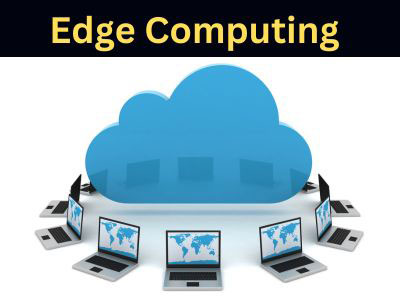Key Takeaway
The main advantage of edge computing in IoT systems is reduced latency. By processing data closer to the devices, it ensures faster response times and real-time decision-making.
Additionally, it reduces the need for constant cloud connectivity, saving bandwidth and improving efficiency. This makes it ideal for applications like autonomous vehicles and smart grids.
Enabling Real-Time Data Processing at the Edge
Real-time data processing is a key advantage of edge computing, as it allows data to be analyzed and acted upon without the delays associated with cloud computing. In traditional cloud computing models, data generated by devices or sensors is sent to remote data centers for processing. This often leads to delays, especially when dealing with large volumes of data or when latency is critical. In edge computing, data is processed locally, closer to where it is generated, reducing latency and enabling immediate actions based on real-time insights.
For industries that require instantaneous decisions, such as autonomous vehicles, healthcare monitoring, or manufacturing, real-time data processing at the edge is indispensable. For example, in manufacturing, sensors embedded in machinery can monitor performance in real time. If an issue is detected, such as a component nearing failure, the system can instantly trigger an alert or even take corrective actions, preventing costly downtime. In healthcare, patient monitoring devices can provide immediate feedback to medical professionals, helping to address critical issues swiftly. This capability enhances operational efficiency, reduces response times, and improves outcomes across industries.

Reducing Latency in IoT Applications
Real-time industrial data processing is critical for optimizing operations and ensuring safety. Edge computing enables this by processing data directly at the source, eliminating delays associated with cloud processing.
For example, in a manufacturing plant, edge devices can analyze sensor data to identify equipment malfunctions instantly, reducing downtime. Engineers must develop robust systems that can handle real-time demands, ensuring accuracy and efficiency in industrial processes.
You May Like to Read
Enhancing Privacy Through Localized Data Storage
Localized data storage in edge computing plays a crucial role in enhancing privacy. Unlike cloud computing, which transmits data to centralized servers, edge computing processes and stores data closer to its source, such as on IoT devices or local gateways. This minimizes the exposure of sensitive data to external networks, reducing the risk of cyberattacks and unauthorized access.
For applications like healthcare, financial services, or government operations, localized data storage ensures compliance with stringent privacy regulations like GDPR and HIPAA. Additionally, localized processing enables users to retain control over their data while avoiding unnecessary data transfers. By combining security measures like encryption and access control, edge computing creates a safer environment for handling private and confidential information.
Lowering Bandwidth Costs for IoT Networks
As the number of connected devices in IoT networks continues to grow, so does the volume of data they generate. Sending all this data to the cloud for processing can quickly become costly, both in terms of bandwidth and cloud storage. Edge computing helps lower these costs by reducing the amount of data that needs to be transmitted over the network.
In an IoT system, only the most critical or processed data is sent to the cloud for further analysis, while raw or less important data is processed locally at the edge. This significantly reduces the bandwidth required for data transmission and minimizes costs associated with cloud storage.
For example, in smart agriculture, soil sensors may continuously monitor conditions like moisture levels and temperature. With edge computing, only relevant data, such as abnormalities or thresholds being reached, is sent to the cloud for further analysis, reducing the data volume and saving on network costs.
By offloading some of the data processing to edge devices, IoT systems can operate more cost-effectively, especially in large-scale deployments.
Improving Reliability in IoT Ecosystems with Edge
Reliability is another major advantage that edge computing brings to IoT systems. In traditional cloud-based IoT architectures, a disruption in network connectivity can severely affect system performance, as all data must be sent to the cloud for processing. Edge computing ensures that IoT devices can continue to operate and make decisions locally, even in the event of network failures.
In remote locations, such as offshore oil rigs or agricultural fields, network connectivity can be unreliable or even unavailable. Edge devices allow IoT systems to continue functioning independently of the cloud, maintaining operational continuity without waiting for cloud-based processing. This makes edge computing crucial for maintaining high system uptime and reliability, even in challenging environments.
Moreover, edge computing can facilitate redundancy, ensuring that critical operations can continue even if a particular edge device fails. As a result, IoT systems become more resilient and less susceptible to the impacts of network outages or failures.
Conclusion
The main advantage of using edge computing in IoT systems lies in its ability to bring data processing closer to the source, enabling faster, more efficient, and reliable decision-making. By reducing latency, improving privacy, lowering bandwidth costs, and enhancing system reliability, edge computing significantly optimizes IoT applications across various industries.
As IoT networks continue to grow and evolve, edge computing will play an even more critical role in ensuring that these systems can handle large volumes of real-time data and operate seamlessly, even in remote or challenging environments. The adoption of edge computing is essential for businesses looking to leverage the full potential of IoT innovations, driving efficiency, security, and cost savings in their operations.
